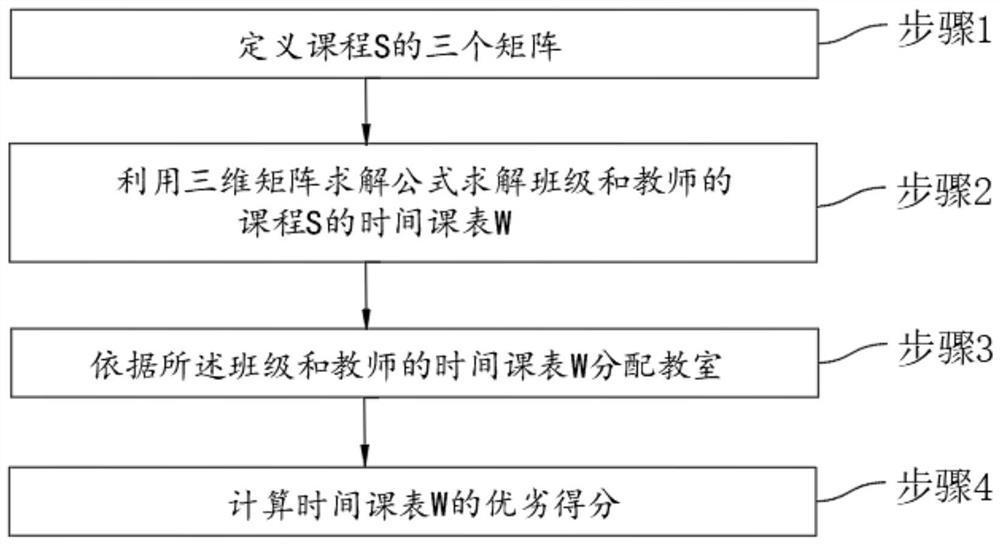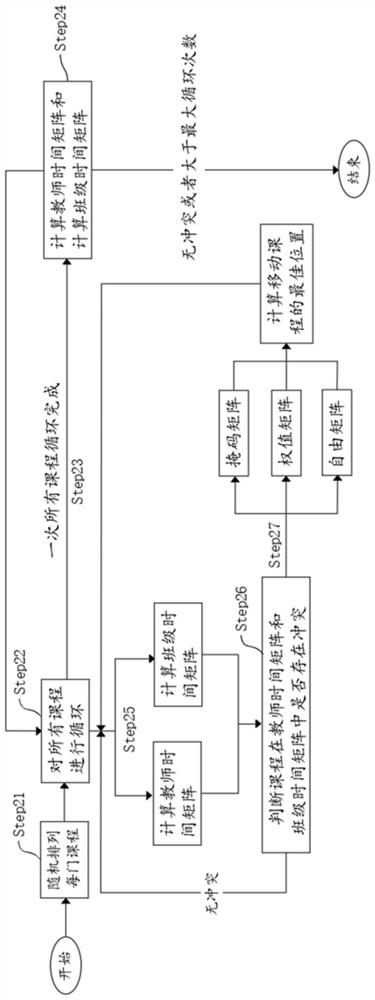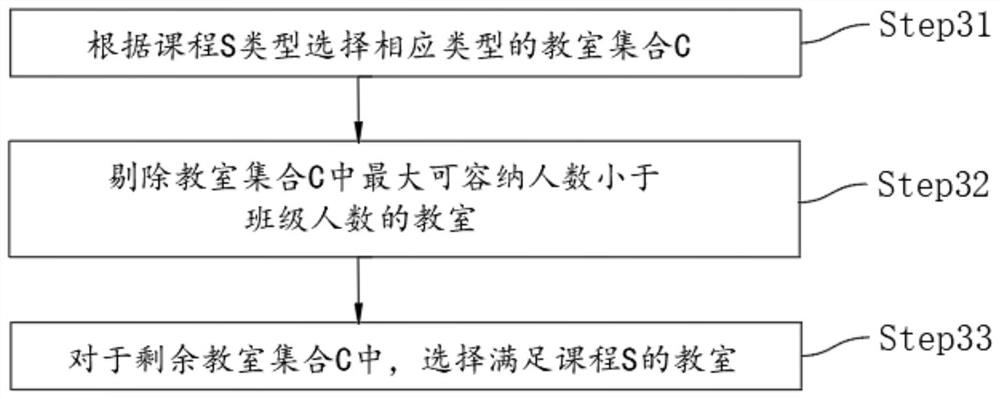Rapid convergence course arrangement algorithm based on three-dimensional matrix operation
A three-dimensional matrix, fast convergence technology, applied in the field of fast convergence course scheduling algorithm, can solve the problem of reducing the amount of calculation, unable to meet various course scheduling conditions, etc., to reduce the number of calculations and iterations, improve efficiency, reduce The effect of calculation
- Summary
- Abstract
- Description
- Claims
- Application Information
AI Technical Summary
Problems solved by technology
Method used
Image
Examples
Embodiment 1
[0025] figure 1 It is a flow chart of a fast convergent class scheduling algorithm based on three-dimensional matrix operation in the embodiment of the present application. The specific steps are described in detail below:
[0026] Step 1: Define three matrices for the course S.
[0027] In the specific implementation, there can be four important factors in teaching and scheduling, namely time, class, teacher, and classroom. These four factors will affect each other, and these four factors will generate three dimensions. The three dimensions are respectively It is time-class, time-teacher, and time-classroom; among them, the time factor can involve week, day, and hour, and for different courses, the start week and end week of class may be different, and time also involves holidays In the case of class factors, the limitation of class factors is that each class can only arrange one course at the same time, which can satisfy the division and combination of classes. The limitati...
Embodiment 2
[0061] refer to Figure 4 As shown, the embodiment of the present application provides a fast convergent course scheduling system based on three-dimensional matrix operation. The algorithm is applied to the course scheduling system, and the course scheduling system includes: an input module, a calculation module and an output module.
[0062] The input module includes a data cleaning unit and a data conversion unit; the data cleaning unit is configured to collect the raw data of the teaching plan, and the raw data can be the basic information data such as courses that need to be scheduled through the teaching plan decomposition, classes and teachers; the data conversion a unit configured to convert said raw data into a matrix expression configured for computation, for example converting a semester timetable into a three-dimensional matrix;
[0063] The calculation module includes a schedule calculation unit and a classroom arrangement unit; the schedule calculation unit is con...
PUM
 Login to View More
Login to View More Abstract
Description
Claims
Application Information
 Login to View More
Login to View More - R&D
- Intellectual Property
- Life Sciences
- Materials
- Tech Scout
- Unparalleled Data Quality
- Higher Quality Content
- 60% Fewer Hallucinations
Browse by: Latest US Patents, China's latest patents, Technical Efficacy Thesaurus, Application Domain, Technology Topic, Popular Technical Reports.
© 2025 PatSnap. All rights reserved.Legal|Privacy policy|Modern Slavery Act Transparency Statement|Sitemap|About US| Contact US: help@patsnap.com



